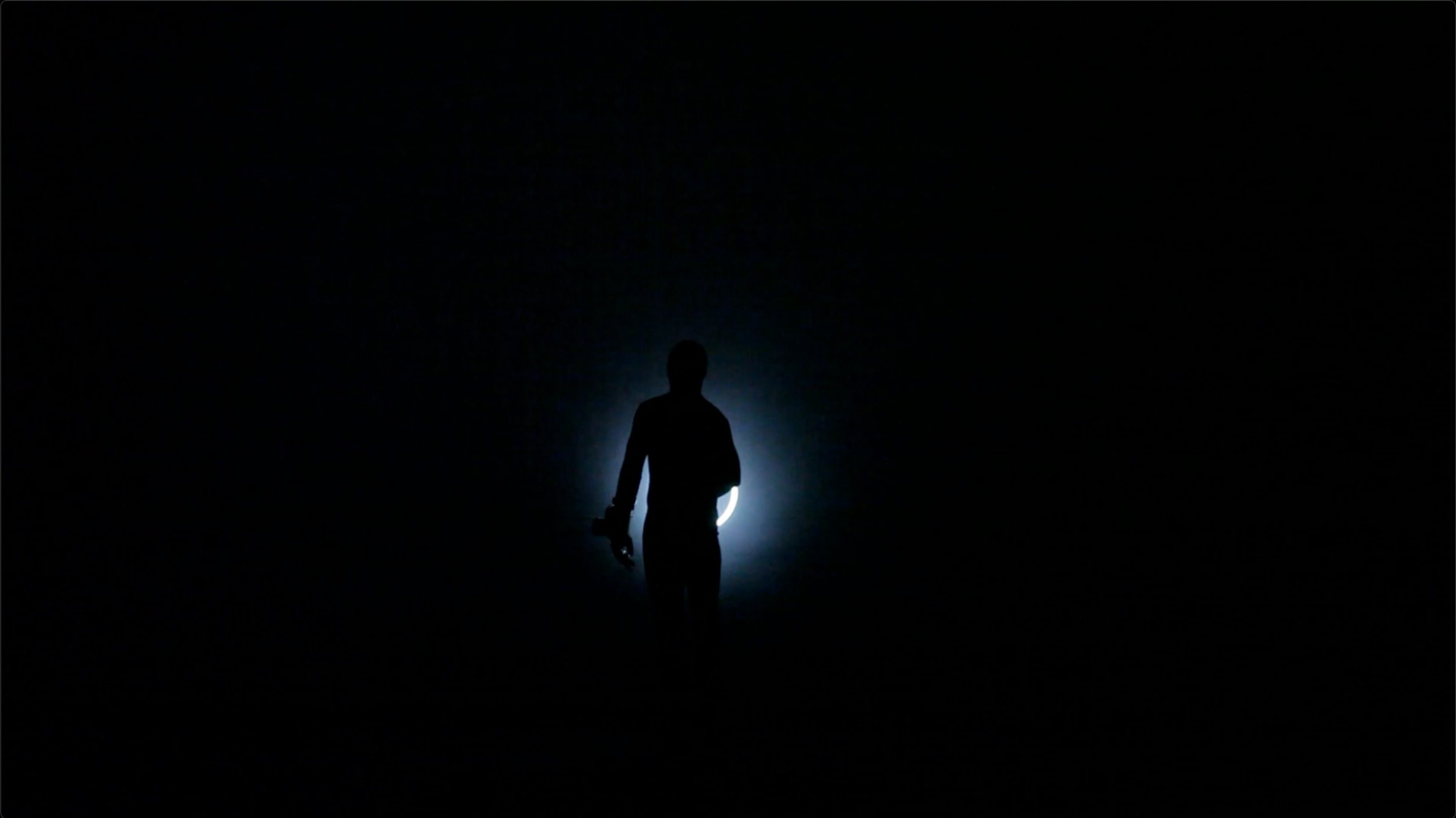
“Visual art has the capacity to bare perception to itself and, for this, light is the ultimate instrument.”
Darkness
My Light Dance artwork begins in total darkness.
I remove all light from a space to clear perception. Without light, the eye has nothing to “grab on to,” no surface to begin to see distance, or edge to infer a corner.
In darkness, the visual brain waits in a state of potential.
A sliver of light
A light cone cast from my body becomes visible as an ellipse when it hits the wall. In stillness, the ellipse conveys no depth, but is two-dimensional.
Light Dance creates a “low-dimensional" visual environment and studies how the brain constructs a world in experience.
Articulated illumination
With the slightest movement, the ellipse dimensionally expands.
From a two-dimensional sequence, the brain constructs a three-dimensional form.
Radial geometries extending from the body
With additional movement, two circles projected from the arms generate higher-order geometries in the minds of the viewers, clearly of a different spatio-temporal order than the host environment.
Seth Riskin is a visual artist exploring perception through the instrument of light.
Riskin redefines ‘light art’ as a means of revealing perception to itself. His original tools reduce light to “geometric minima,” enabling Riskin to shape perceptions of space and time. Since 1987, he has worked at MIT in dialogue with scientists, engineers and scholars from a range of adjacent fields. Penetrating to the foundation of visual experience, Riskin’s work represents the intersection of visual art and vision neuroscience, a new space of interacting practice and theory that he is actively unfolding in collaboration.
Light Dance is the primary form of Riskin’s work.
Riskin’s Light Dance art form uses light in the manner of vision, cast from the artist’s body to the boundaries of a dark room. In these silent, space-defining performances, Riskin sweeps out radial geometries that encompass viewers in a new perceptual experience.
“Turning vision inside out,” Riskin makes low-level perceptual responses accessible to conscious study.
Light is the means, but Riskin sees perception as his medium. His light stimuli do not illuminate; they become objects of perception. Working with these perceptual units in situ, he “speaks” to the early visual system of the human brain. Riskin sees his work as part of the long, artistic tradition of exploring perception by physical creation, a legacy he builds upon with technology, turning light into reflexive experiences of vision. Riskin teaches, conducts research and applies light in a range of artistic experiments.
Higher order geometries
With movement, the original, geometric units of light generate complex geometries in perception. Light Dance uses light in the manner of vision.
Simple, local units of light information reach out from my body, composing structures in perception over time. Light Dance inverts the ordinary function of light. It is used not to light the material world, but to raise awareness of perceptual construction.
Light Dance is a seeing process made visible and collective.
Light reveals perception
The cylinders grow in size and speed with distance from the body.
The structure and rules of the space defined by the light begins to reveal itself.


